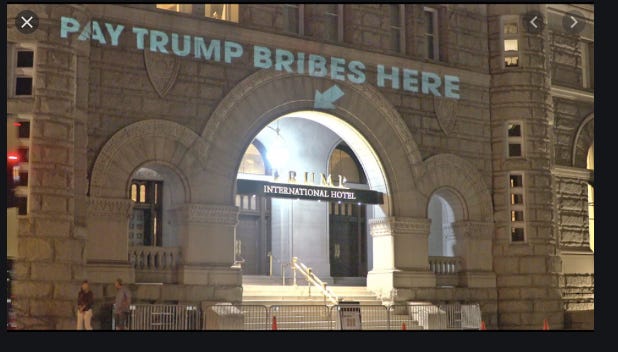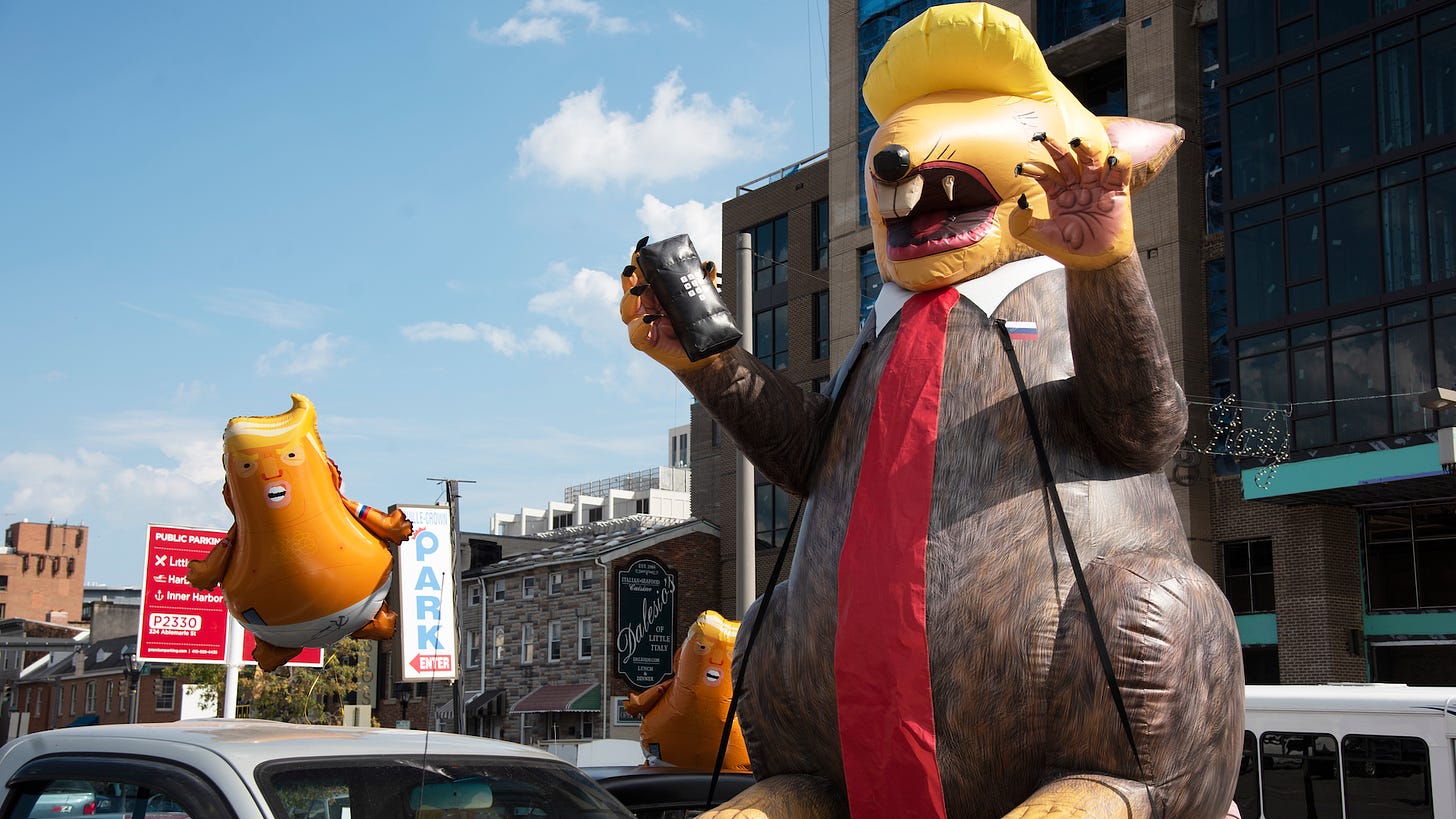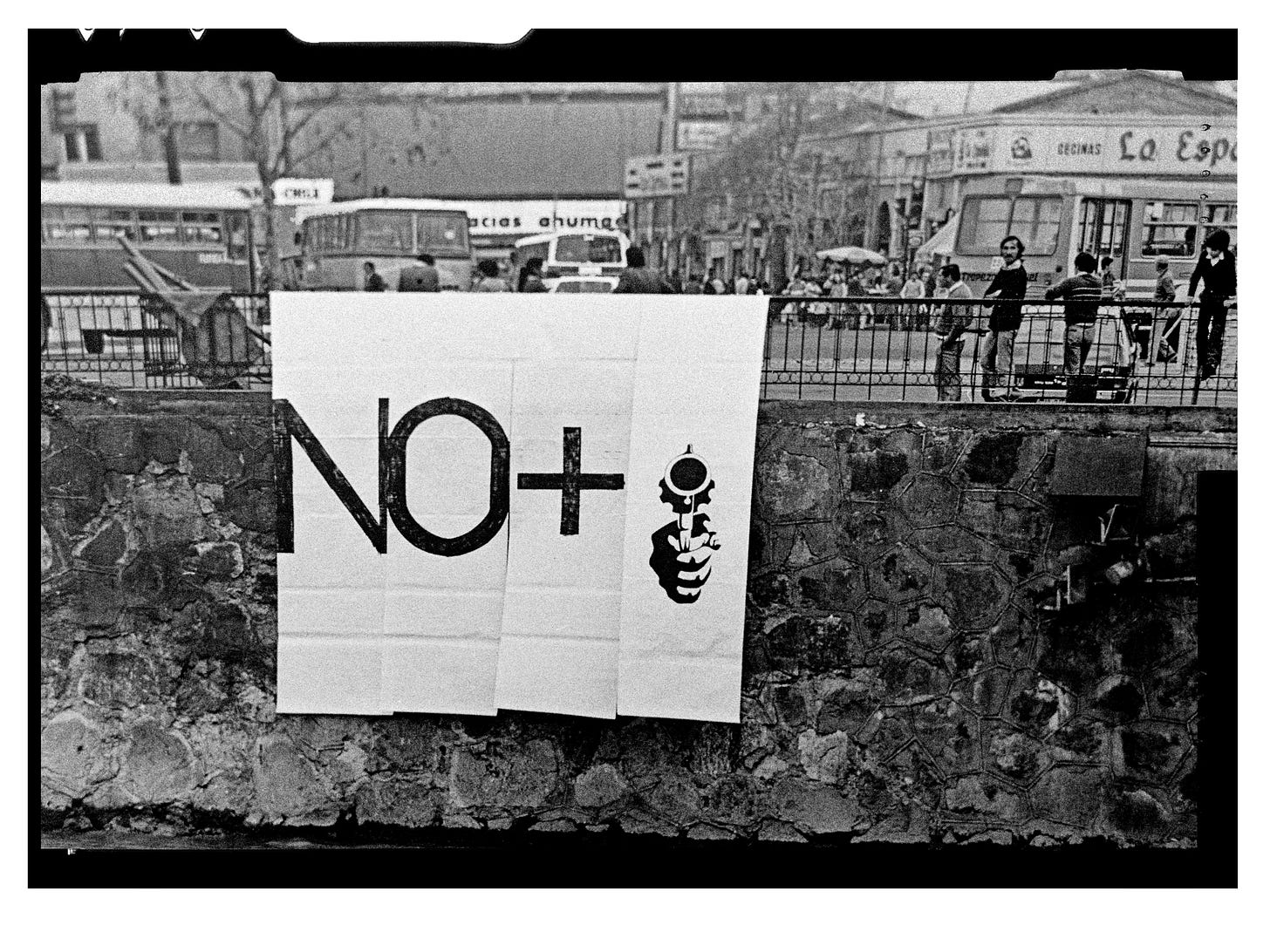In July 2019, President Donald Trump tweeted that the late Representative Elijah Cummings’ (D-MD) majority-Black district, which included the city of Baltimore, was “a disgusting, rat and rodent-infested mess.” The insult made headlines, as Trump surely knew it would. As chair of the House Oversight Committee, Cummings had been investigating the use of private email accounts for state business by Trump's daughter Ivanka Trump and son-in-law Jared Kushner. Trump needed to divert media attention from the violations Cummings was bringing to light.
The Baltimore Sun wasn’t fooled. “Better to have a few rats than to be one,” its editorial board responded, blasting Trump as “the mocker of war heroes, the gleeful grabber of women’s private parts, the serial bankrupter of businesses, the useful idiot of Vladimir Putin....” When Trump visited Baltimore in September, a "corruption cleanup" protest awaited him, complete with a giant inflatable rat and residents who raised their middle fingers as his motorcade passed. Trump's insult sparked a sense of civic pride and placed attention squarely on the news he sought to hide.
Public protest has always been a grassroots response to abuses of power. So it's not surprising that the spread of illiberal rule has triggered a wave of global activism that a 2020 report calls “historically unprecedented in frequency, scope and size.” In 2019, demonstrations against economic inequality in Chile were the largest since the 1980s protests against the military dictatorship, and millions mobilized in Hong Kong against a proposed bill that would allow extraditions to mainland China.
Even the Covid-19 pandemic didn’t stop those driven to protest police brutality in Nigeria, inaction everywhere on climate change, and racism in America. The summer's Black Lives Matter demonstrations engaged an estimated 15-26 million people, making it potentially the largest movement in American history. Tens of thousands of Indian farmers now protest Narendra Modi's policies, and activists working against the February 2021 coup in Myanmar use digital tools to facilitate boycotts of businesses linked to the military.
Non-violent resistance, long the most effective form of pushback against illiberal governments, takes myriad forms. Small-scale actions and public art can have an outsized influence on demoralized and fearful populations. The “Hitler mass murderer” graffiti the anti-Nazi White Rose group left on a Munich bookshop wall during World War Two, and the NO+ (for No mas/no more) placards the Art Actions Collective (CADA) placed around Santiago in the early 1980s, inviting artists to complete the message, are two examples.
Mass protests bring people together to reclaim public space from the state and make a different nation visible and audible. Shows of unity rebuke government efforts to produce societies marked by mistrust and hostility. Xi Jinping's China and Modi’s India both use an old script in accusing protesters of being agents of foreign interests.
Resisting bodies also stand in for those the state has already removed from view. The memory of previous protests becomes more precious as governments try to bury the history of struggles for freedom, as the Chinese are now doing in arresting veteran pro-democracy activists in Hong Kong and forcing a new generation of resistance leaders into jail or exile.
Mass protest can be doubly effective when it fuels an electoral strategy. Illiberal rulers know this too. That's why they arrest or harm the most influential pro-democratic politicians, as is happening to Alexei Navalny and his associates in Vladimir Putin's Russia.
The case of American resistance under Trump, who governed as an aspiring autocrat within an open society, provides a contrast. The January 2017 Womens' March, which drew on feminist activism and the civil rights movement, proved transformative, not least because it provided a pipeline of political candidates. More than 3,200 women entered the ballot in fall 2018 midterm elections. The 90 that took office included a record number of women of color and the first female Muslim Representatives, Rashida Tlaib and Ilhan Omar.
Resistance against Trump also has highlighted the importance of local and state politics and justice in pushing back against abuses of power. From challenges to the 2017 ban on travel from predominantly Muslim countries, to declarations of sanctuary cities, counties and states for undocumented immigrants, to defeating Republican attempts to criminalize protest, to Georgia Secretary of State Brad Raffensperger's refusal to alter the results of the 2020 election in Trump's favor, the past four years has produced a blueprint for democracy protection.
As happened in 2019 Baltimore and elsewhere, public protest and public art combined to make Trump's corruption and brutality visible. Robin Bell’s projections on the façade of Trump International Hotel in Washington stand out, like his May 2017 action, “Pay Trump Bribes Here,” that called attention to Trump's profiting from his private business concerns.

Autocracy thrives when people lose hope that things can ever be different. Resistance in its many forms keeps alive the possibility of change and inspires others to work for a better future, even if the outlines of that future are, at the moment, unclear. As Bell says, each resistance act is a communication that “lets people know that we listen and we care.” Such messages of solidarity and empathy, translated into a politics of care and social justice, will be part of our defense of democracy in the coming years.
Author’s Note: Robin Bell quote from interview with author, March 11. 2018. My follow-up interview with Bell on public space and resistance will be published in Lucid on April 7, 2021.







There was tremendous push back of Trump on social media by those of us who saw the danger of Trump's proto-fascism and sociopathy. It is unfortunate that 74 million Americans embraced this authoritarian as the answer to our problems. There is such allure of fascism in its infancy, when nations are in trouble. His voters are still in denial that Trump is dangerous, even after being given evidence that shows that he is. In Social Psychology, this is known as the Backfire Effect.
Bodies are crucial to resistance in many different forms. I'm reminded of the AIDS activists who gathered in Washington, D.C. in 1992 to protest government neglect at the height of the epidemic. Protesters held hands around the White House and sprinkled the ashes of friends and loved ones on the White House lawn. (For reference: https://www.vice.com/en/article/vdqv34/why-the-ashes-of-aids-victims-on-the-white-house-lawn-matter). A few years later, activists held an open-casket funeral for Steve Michael, founder of ACT UP/Washington D.C., in front of the White House. These actions rendered visible the link between government silence and the overwhelming suffering that it caused. To this day, ACT UP is masterful at deploying the aesthetics of anger to generate a political response. Love this post on resistance, Ruth!